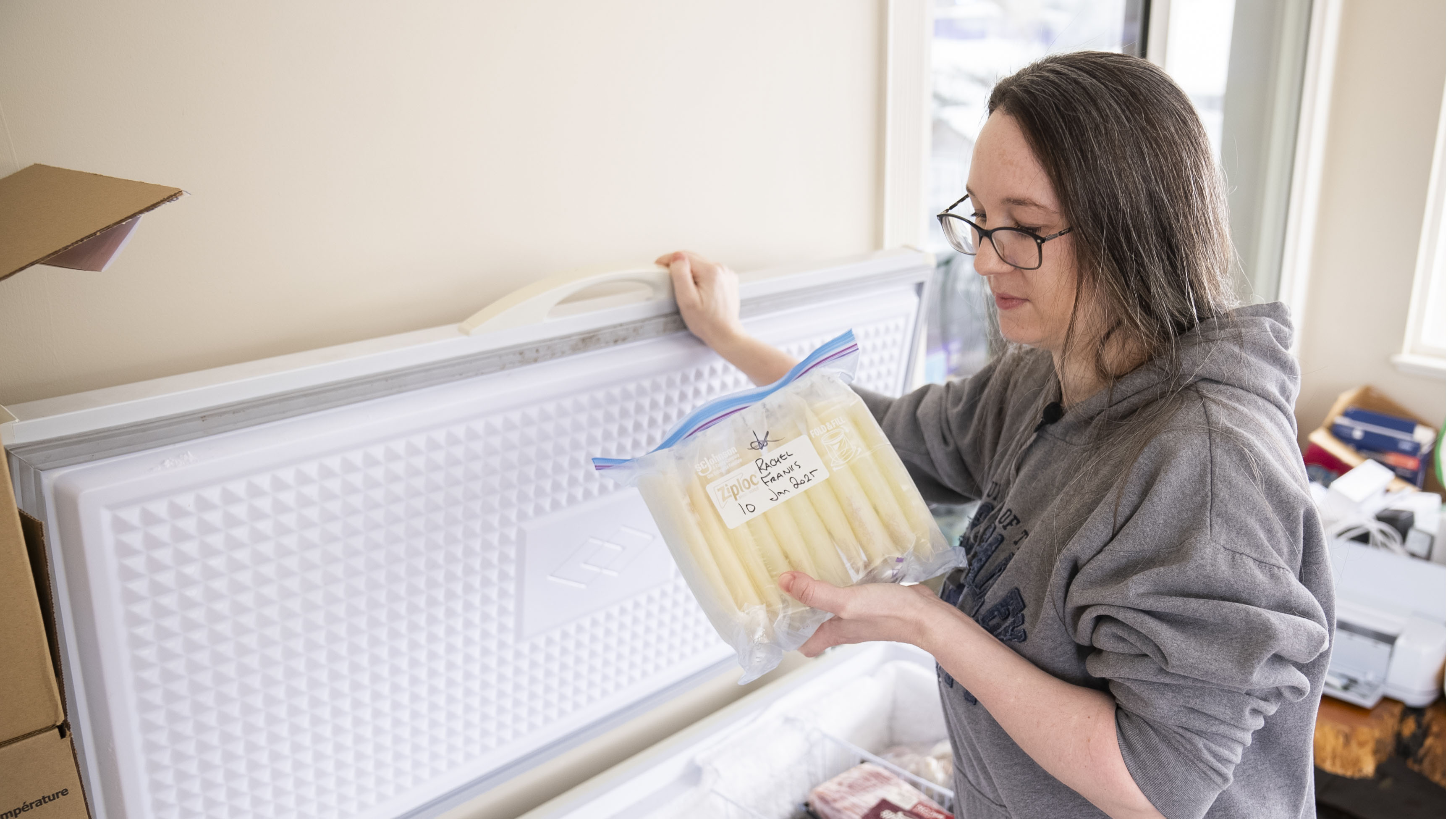
Raw human milk donations have soared nearly 500 per cent since June 2024 helping nourish tiny lives.
Fraser Health’s Baby Friendly Initiative team launched outreach efforts in summer 2024 to address the need for more human milk donors. Through storytelling, they inspired a skyrocket in raw human milk donations from 884,816 mL in the first half of 2024 to 4,399,770 mL in the second half of 2024.
As part of their outreach efforts, the team highlighted a mother's journey of receiving donor milk for her premature baby and later becoming a donor herself, showcasing how milk donation can come full circle and save lives. Her story resonated with others when it was shared, inspiring more people to learn about and support milk donation.
"We recognized that we needed to engage more people in our communities to raise awareness about the importance of milk donation, especially since we observed a shortage of donors over the years," says Andrea Singh, project leader for the Baby Friendly Initiative. "Our team wanted to share this mother's story as it would resonate with potential donors, and through this storytelling, we were able to inspire action."
At the heart of this increase are donors who stepped up with milk donations to support families in need.
Rachel Franks, a mother of four, decided to donate milk based on personal experience and her growing awareness of the impact that milk donors and their donations can have.
"With my first babies, I didn't donate. But before each birth, I cleaned out my freezer and realized I was throwing out a lot of milk," recalls Rachel. "I had seen information about milk donation from Fraser Health and wanted to get involved."
With a growing demand for infant feeding options, more people are becoming aware of the importance of human milk. The program continues to highlight the value of donor milk, especially for the most vulnerable babies.
"People think the approval process is difficult, but it's really straightforward," explains Rachel. "They guide you through each step, from hygiene and sterilization to safe storage, so the milk remains safe for the most fragile babies.”
All donors undergo screening, including a short questionnaire over the phone or online, a five-minute written questionnaire, blood drawn, and their primary care provider is contacted. Donors can reach out to their local public health unit or the Provincial Milk Bank for support and questions that may arise.
"We're working to normalize milk donation so people understand the impact they can have," emphasizes Andrea. "We're also making it easy for parents to drop off milk even if they have kids in the car or a sleeping baby."
Public education and accessibility are critical to encouraging the donation of raw human donor milk.
Last year, the majority of donor milk went to NICUs, and the focus remains on ensuring that the most vulnerable babies receive the support they need during their critical early days.
"Community support is the backbone of parenting success. When I started donating, I gave back in a small but significant way," says Rachel. "Some families need extra help, and others need to step up when possible. I've seen community support as something that can save lives."
As the Baby Friendly Initiative moves into 2025, they plan to expand their outreach, continuing to drive conversations in the community about the importance of donor milk.
Learn more about donor milk and how to become a donor at fraserhealth.ca/donormilk.


